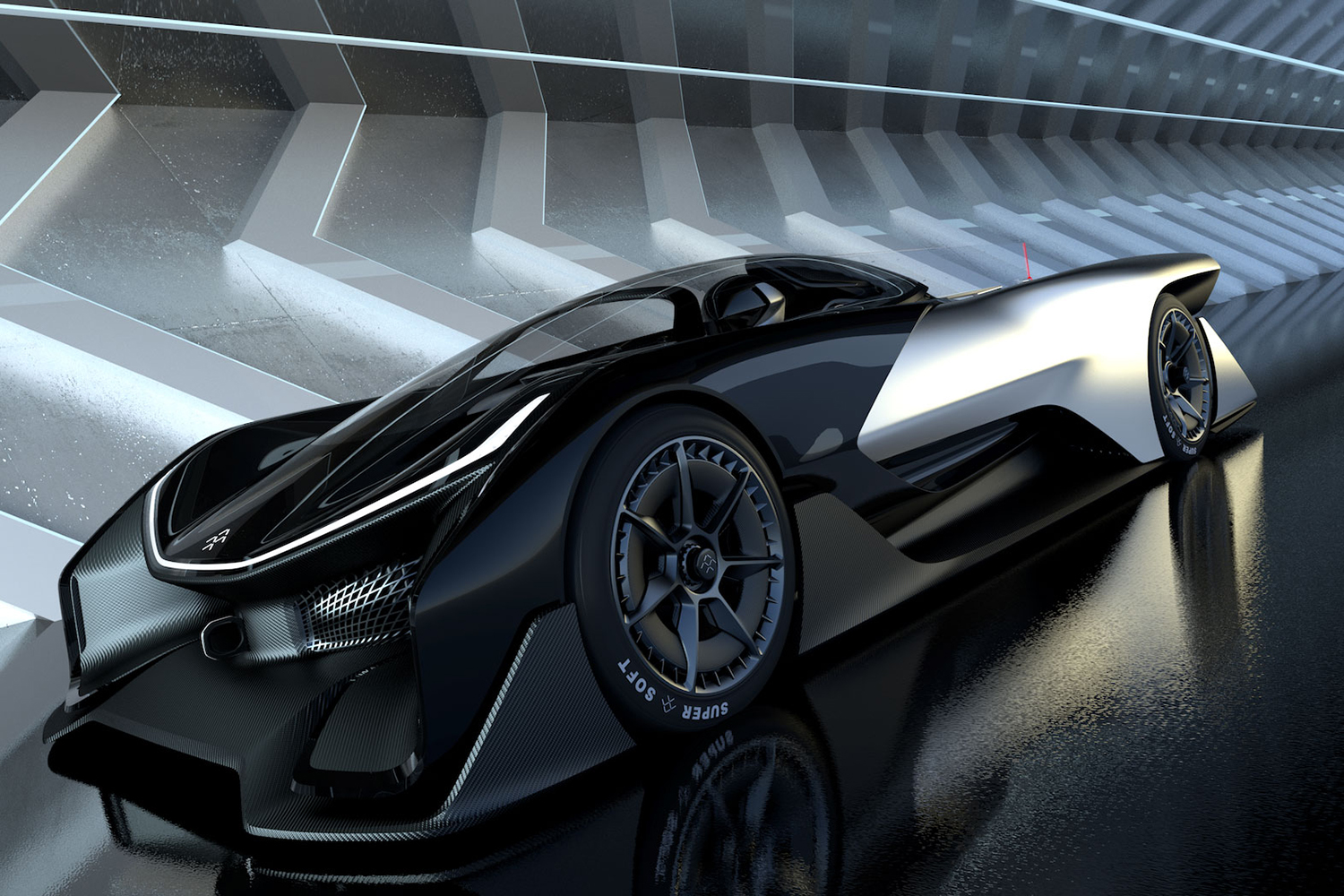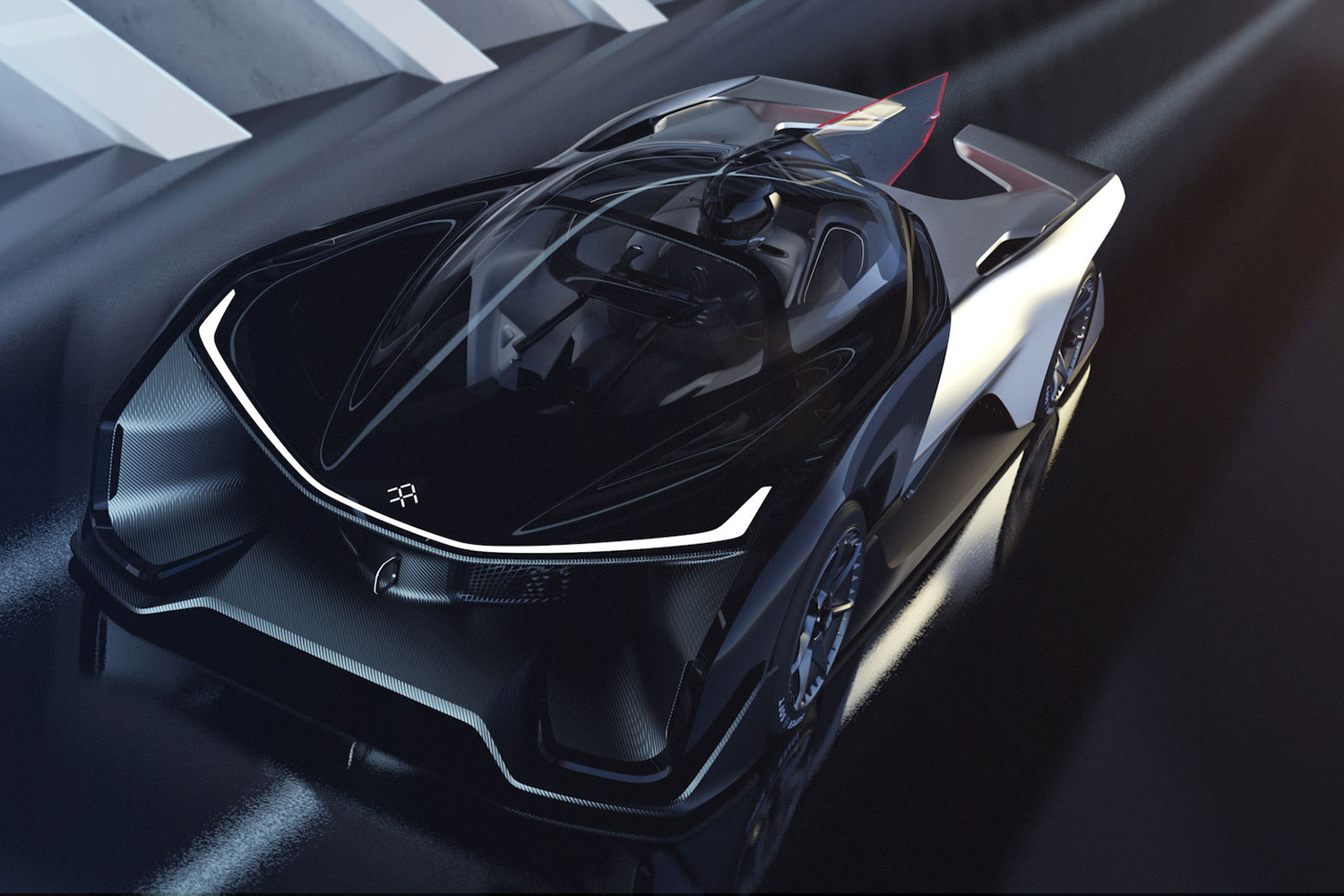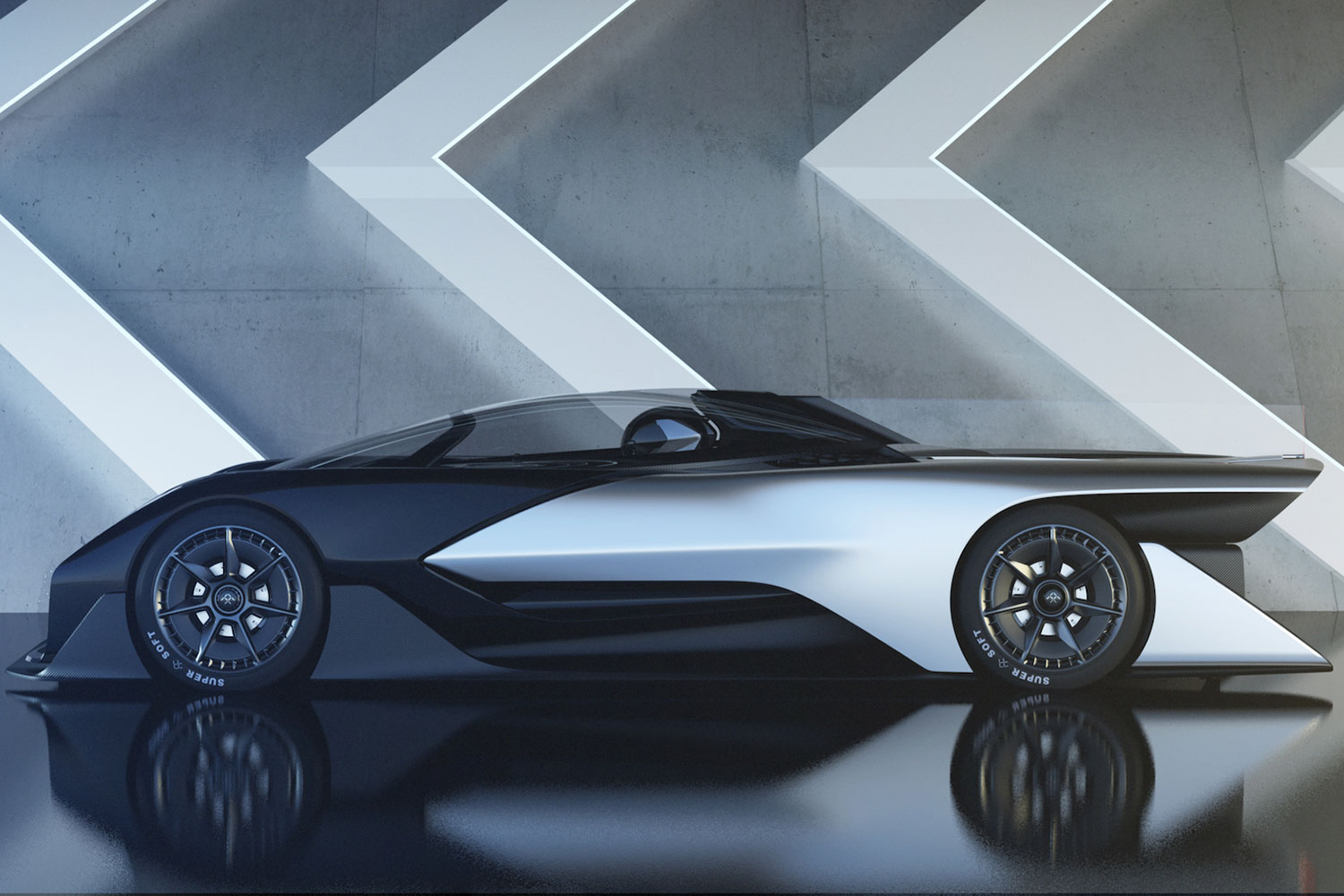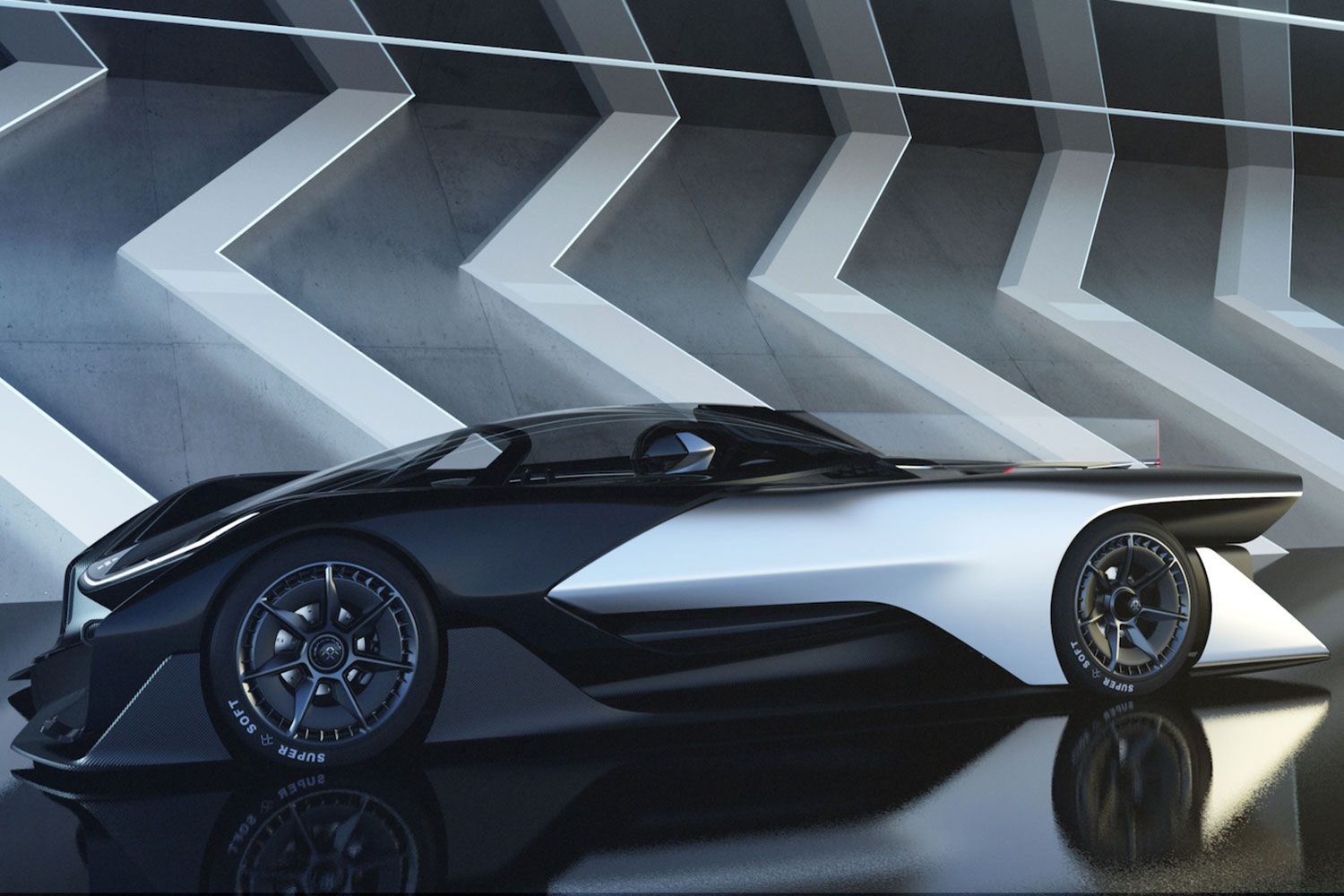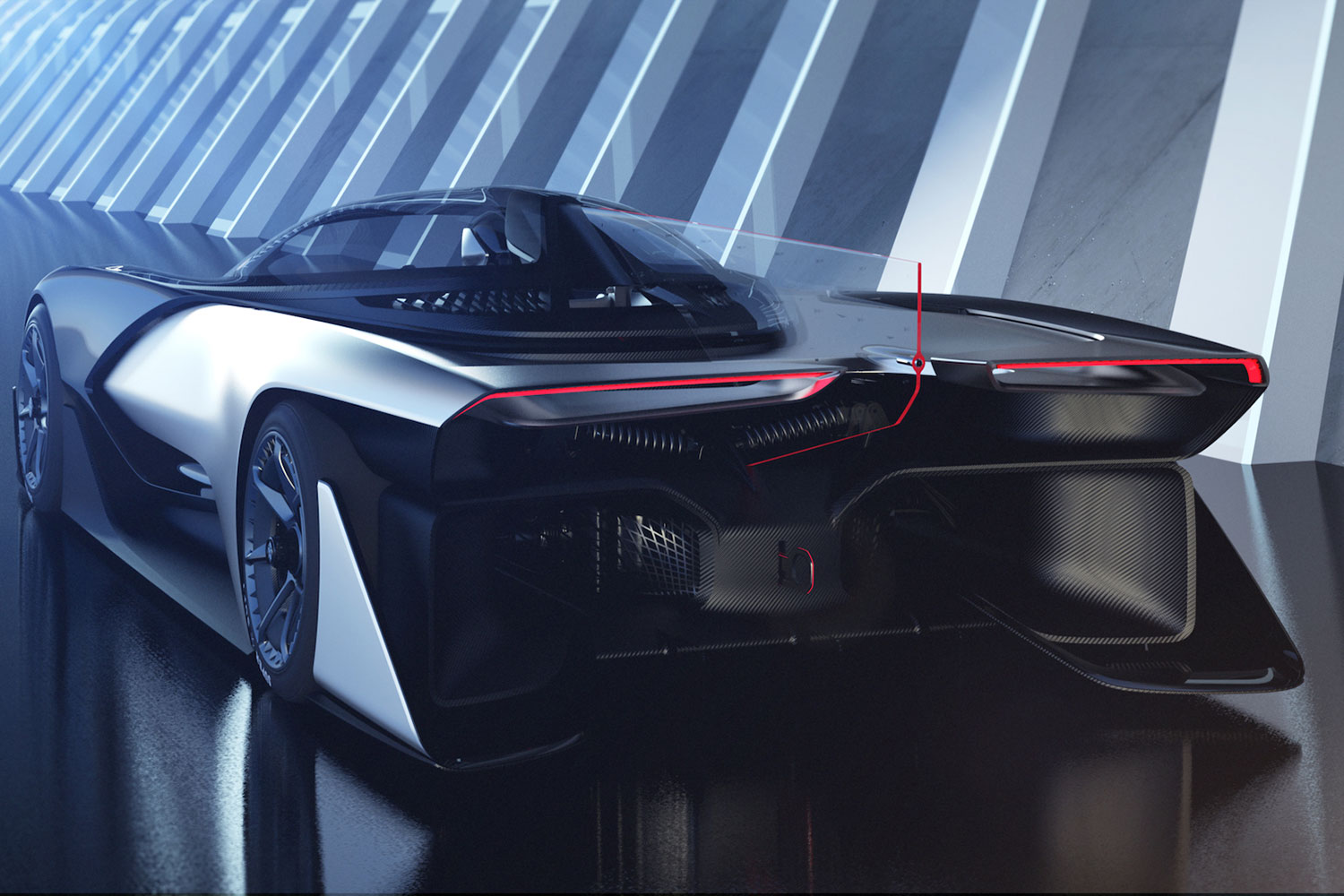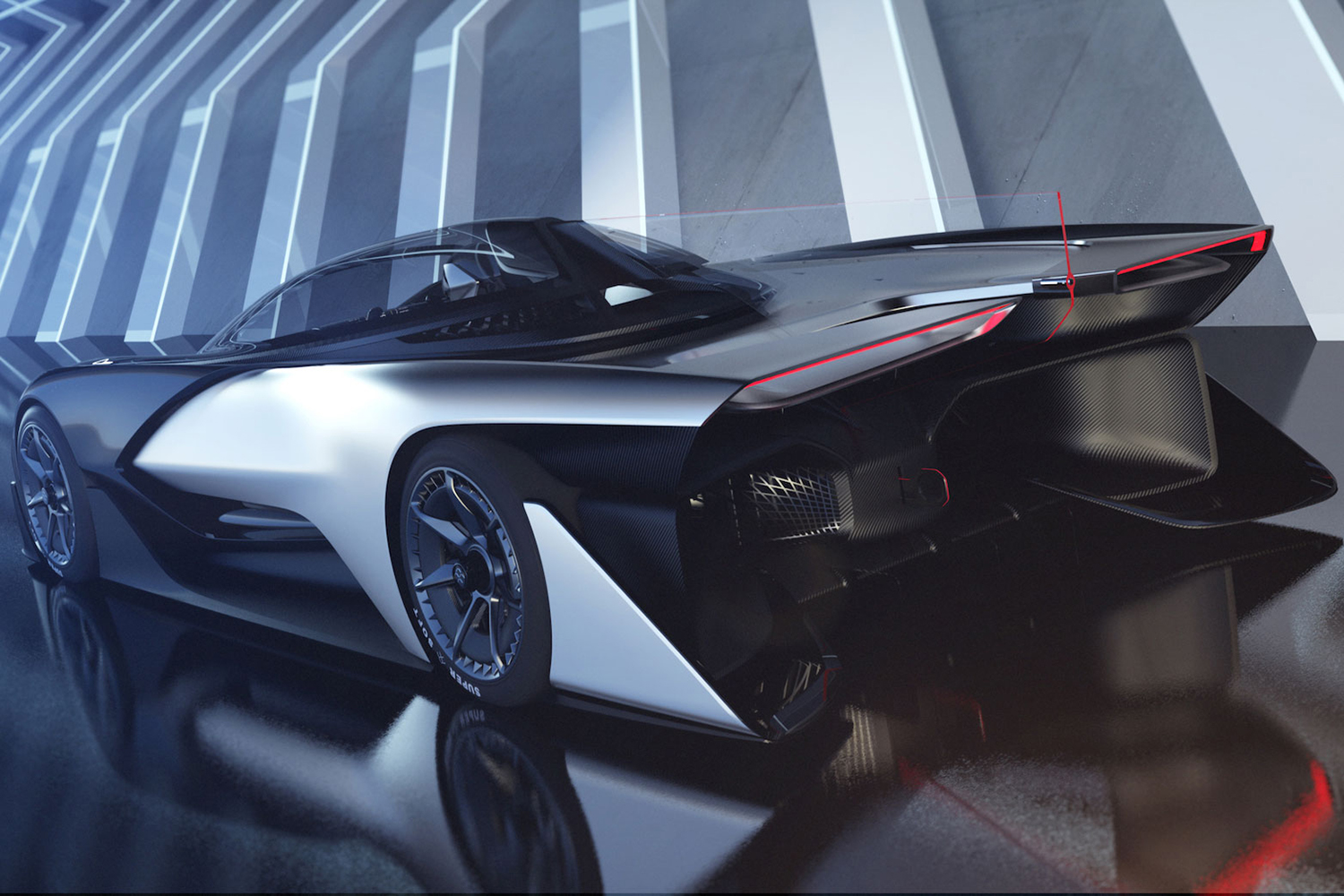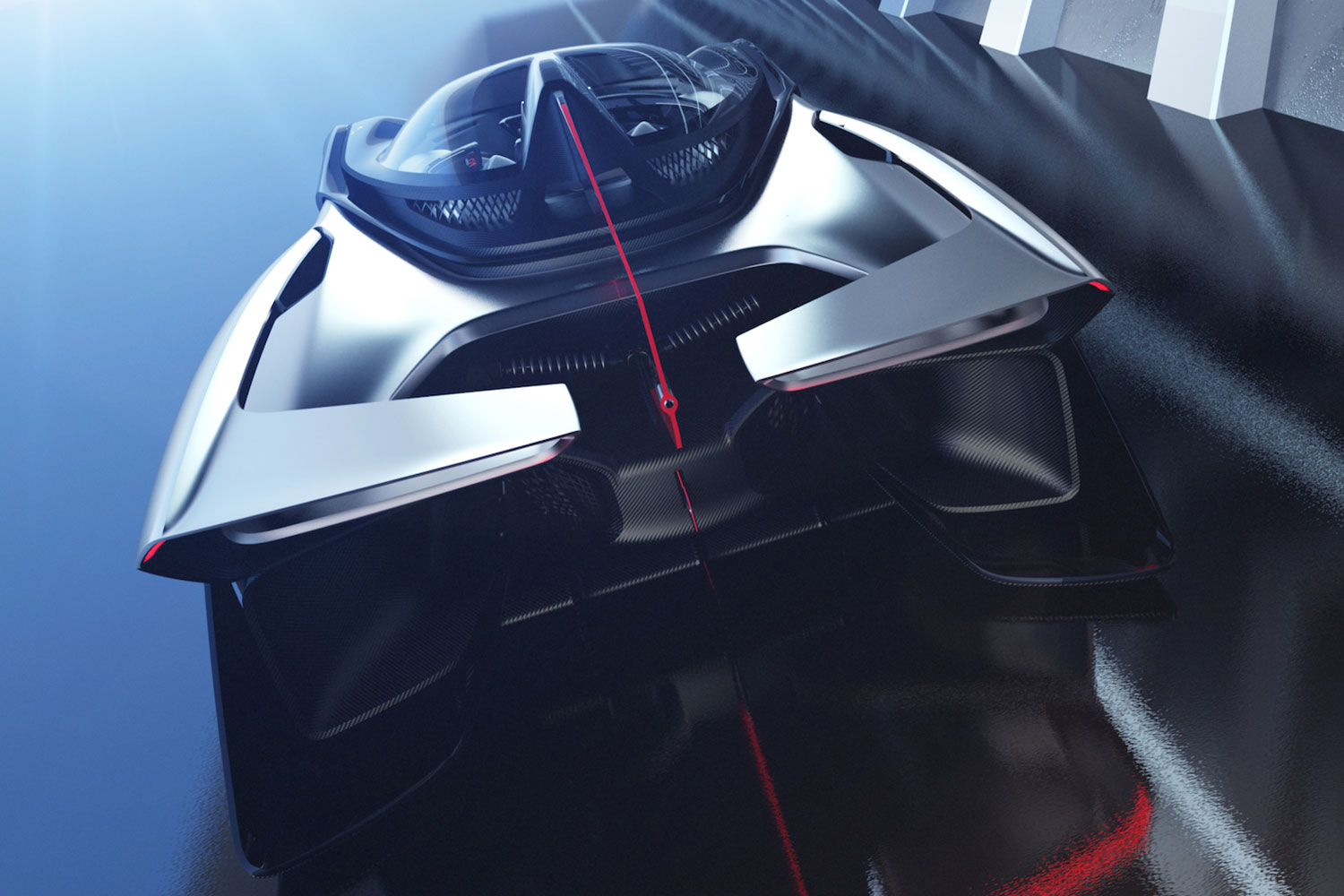It’s likely that the phone currently in your pocket is a state-of-the-art smartphone and not an old plastic flip phone. Why? because innovators rethought what a phone is, and changed the fundamental way they work instead of remaking a new version of the same thing over and over. Faraday Future hopes to do the same thing for cars with its new Variable Platform architecture.
The automotive startup had us all guessing just what its “vision for the future of mobility” would be, but we need wait no more. Today before CES 2016, Faraday pulled the sheets off of the FFZERO1 concept, the true pinnacle of what that vision could become.
The crux of what FF seeks to achieve is its platform, which they shorten to VPA. What supposedly sets this platform apart from other so-called modular platforms is that more elements of it are configurable. Built specifically for electric vehicles, the platform focuses on “strings” of batteries that make up the battery floor. By adding or removing strings, they change the dynamic of the car – More strings, big electric SUV. Fewer stings, small economy hatchback, for example.
“This project liberated our designers and inspired new approaches for vehicle forms.”
“The FFZERO1 Concept is an amplified version of the design and engineering philosophies informing FF’s forthcoming production vehicles,” said Richard Kim, head of design, Faraday Future. “This project liberated our designers and inspired new approaches for vehicle forms, proportions and packaging that we can apply to our upcoming production models.”
VPA can also be configured with up to three (possibly four) electric motors. Apart from configurable length and width, the platform can be developed for front-, all-, or rear-wheel drive. The bottom line: Imagine the electric vehicle you want, and Faraday Future believes they can make it with ease.
In the case of the FFZERO1, it’s the most extreme application of VPA’s possibilities. Sporting a look that resembles a futuristic Le Mans prototype, the car has more than a few sweet highlights to it than just style. The teardrop profile pushes the driver cockpit as forward as possible, highlighted with the “UFO Line” that wraps around the structure, giving it its stellar appearance. Two aero tunnels allow for air to run through the design rather than around or under it, designed to both reduce drag and cool the battery.
There are more out-of-this-world tricks on the inside, too. The driver seat tilts back at a 45-degree angle, and is connected to the car’s halo safety system that supports the head and neck by attaching to a helmet designed specifically for the car. This headpiece will also gather biometric data on the driver while providing water and oxygen.
Within the carbon-fiber structure is a fly-by-wire system that is preloaded with all the sensors needed for autonomous driving. It’s also set with a host of internet connectivity goodies, so information like telemetry could be saved to the cloud. All this makes it possible for the car to “store” your best laps and re-create them … and maybe pull some of its own.
If the FFZERO1 went into limited production, Faraday Future claims it would pack 1,000 horsepower and could jump from 0 to 60 in three seconds as it sprints in excess of 200 mph.
Usually a concept from a startup manufacturer remains just that, and no part of it sees the light of day. Things differ slightly with Faraday Future however, with the company already prepared to break ground on an assembly facility in just 18 days. It’s also backed by Letv, a major Chinese technology brand often called “the Netflix of China.” Combine that with a few former Tesla and Jaguar designers, and the future that Faraday wants to bring forth could shake up more than the EV battle, it could change how we think of cars, period.
